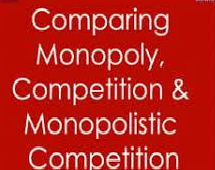Microeconomics in Competitive and Monopolistic Firms Order Instructions: Please explain the answers.
Microeconomics in Competitive and Monopolistic Firms Sample Answer
Question 1
Consider a firm operating in a perfectively competitive market with the following fixed costs (FC), variable costs (VC) and unit price (p) (price is in pounds sterling):

p=20; VC=18q; FC=1,000
- Break-even quantity
At break even points, the profit is usually zero. Break even quantity is given by;
Break even quantity = x = Fixed cost
P – V
Break even quantity = 1000
20 – 18
Break even quantity = 500 units
- If the firm want to maximise profits, they should reduce their total cost of production and increase the selling price.
- Calculate the level of profits for each of the following quantities:
q=600
Profit = TR – TC
(20*600) – (18*600) – 1000
Profit = 21,800
q=700
Profit = TR – TC
(20*700) – (18*700) – 1000
Profit = 25,600
q=800
Profit = TR – TC
(20*800) – (18*800) – 1000
Profit = 28,400
Question 2
A firm operates in a monopolistic market and has the following fixed and variable costs:
FC = 50,000
VC = 200q
Assume in this market demand is regulated by the function (price is in pounds sterling):
qd = 10,000 – 25p
Calculate:
- The quantity (q) at which the firm’s profit is maximized
P = 10,000 – q
25
Q = 10,000 – 25(200)
Q = 5,000 units
- The price (p) at which the firm’s profit is maximized
P = 10,000 – 5,000
25
P = 200
- The maximum possible profit
200 * 5000 – 50,000
100,000 – 50,000
= 50,000
Question 3
- At equilibrium, “the quantity supplied in the market is equal to the quantity demanded in the market” (Besanko et al., 2011).
Equilibrium = 23,000 – 50p = 10p – 1,000
Equilibrium =23,000 +1,000 = 10p + 50p
Equilibrium =60p = 24,000
Equilibrium price = 400
Equilibrium quantity qd = 23,000 – 50p
Qd =23,000 – 50(400)
Qd = 3,000 units
- Now calculate the new equilibrium price and quantity assuming a subsidy of 40 pence per unit is applied.
New equilibrium
Equilibrium price = qd = 23,000 – 50p
3,000 = 23,000 – 50p
20,000 = 50p
P = 400
qs = 10p – 1,000
= 23,000 – 50(400)
= 3,000
- Customer because of the reduced prices
Question 4
The inverse supply and demand functions for a good are given by (price is in pounds sterling):
p = 240 – qd
p = 60 + 2qs
- Equilibrium price (p) and quantity (q)
At equilibrium = 240 – q = 60 + 2q
= 240 – 60 = 2q + q
= 180 = 3q
3q = 180
Equilibrium price = 60
Equilibrium quantity = 240 – 60
= 180 units
- Assuming the government imposes a fixed tax of 60 pounds sterling per unit; calculate what percentage of the tax is paid by the consumer
180*120= 21,600
180*60 = 10,800
10,800 * 100
21,600
= 50%
Now replace the inverse demand function by the more general equation:
p = 240 – Kqd
- Calculate what percentage of the tax in part (b) is paid by the consumer when:
- K = 2
P = 240 – 180
60 *100
240
= 25%
- K = 3
P = 240 – 180 (0.5*3)
30 *100
240
= 23%
- K = 6
P = 240 – 180 (0.5*6)
300 *100
240
= 125%
Question 5
Consider the inverse supply function (price is in pounds sterling):
p = 2qs + 5
p – 5 = 2q
q = p – 5
2
- Price elasticity of supply when p = 10
Price elasticity of supply = % change in quantity supplied (Besanko et al., 2011)
% change in price
Price elasticity of supply = 2.5 – 2 * 100
10 – 5
Price elasticity of supply = 0.5 * 100
5
Price elasticity of supply = 0.1 < 1 which is an inelastic demand
- Quantity supplied when p = 10
Quantity supplied = Q = 10 – 5
2
= 2.5 units
Now consider the inverse parametric supply function:
p = Aqs + B
Assume for this function the quantity supplied when p = 10 is the same as in part (b). At this point, the price elasticity for the parametric function is five times larger than that of the supply function used in parts (a) and (b) above.
- Find the values of the parameters A and B.
10= A (0.5)+ B
Microeconomics in Competitive and Monopolistic Firms References
Besanko, D., Braeutigam, R. R., & Gibbs, M. (2011). Microeconomics. Hoboken, NJ: John Wiley.




